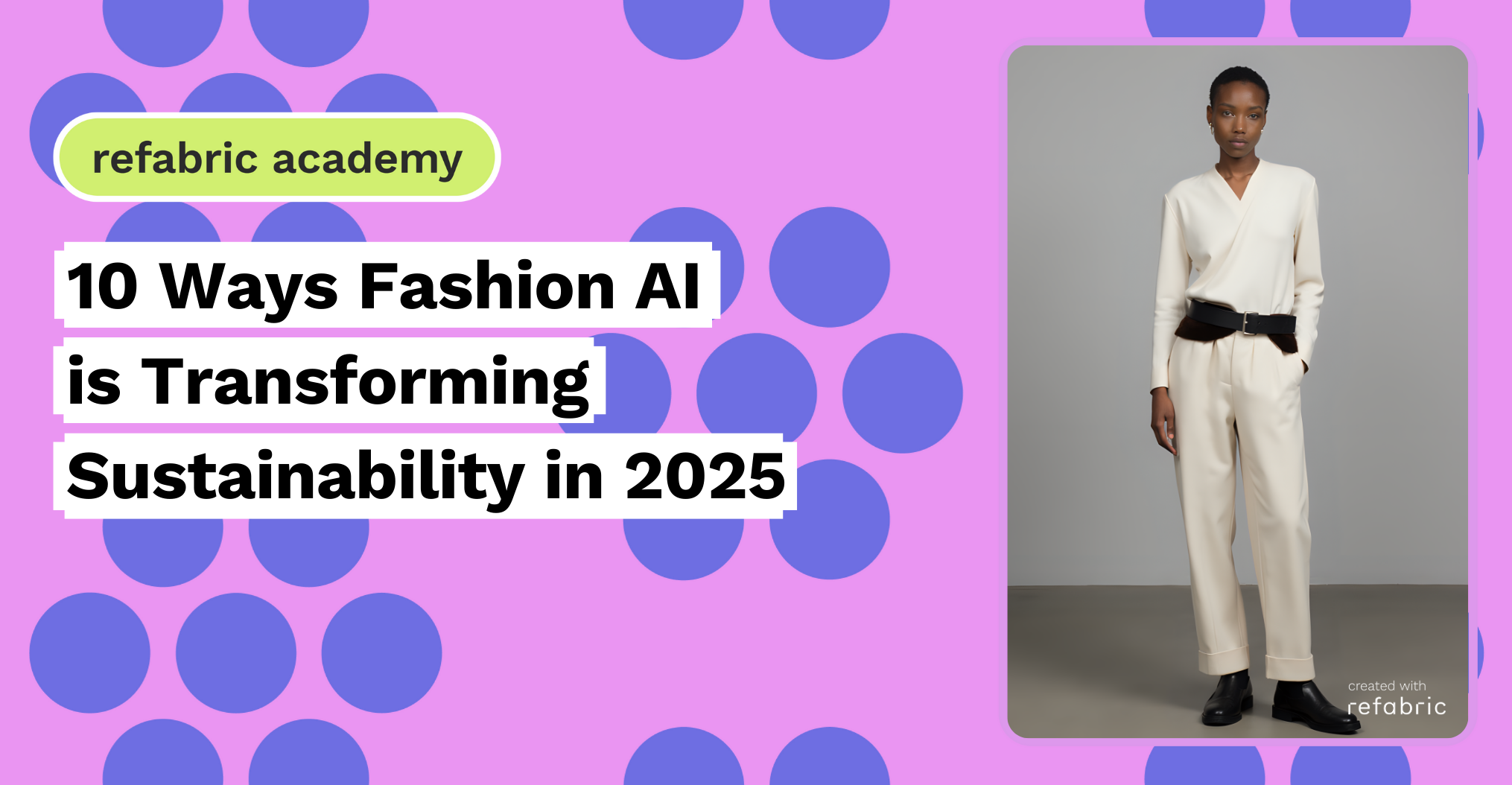Fashion AI is revolutionizing sustainability in 2025, reshaping how the industry approaches design, production, and consumption. With the global push toward greener practices, the integration of artificial intelligence is becoming the cornerstone of the fashion world’s efforts to meet sustainability goals. Here are 10 ways fashion AI is leading the charge toward a sustainable future.
1. Predictive Design for Zero Waste
AI tools analyze consumer preferences and market trends to create designs that are both desirable and efficient. By predicting demand, fashion brands can reduce overproduction, one of the largest contributors to waste in the industry.
2. Streamlined Supply Chains
Fashion AI enhances supply chain transparency and efficiency. Tools like blockchain-powered AI systems allow brands to track the lifecycle of their products, from sourcing raw materials to delivering the final product. This minimizes unnecessary transportation and energy usage, reducing the overall carbon footprint.
3. Fashion AI is Enhancing Fabric Innovation
AI-driven research accelerates the development of sustainable materials. For instance, algorithms analyze environmental data to identify eco-friendly alternatives, such as biodegradable fabrics or materials derived from agricultural waste.
4. Recycling Made Smarter
Sorting and recycling old textiles is now more efficient thanks to fashion AI. Advanced AI-powered scanners can categorize fabrics by composition, enabling more effective recycling processes and reducing landfill waste.
5. Personalization Reduces Overproduction
By offering hyper-personalized recommendations, fashion AI ensures that brands only produce what customers truly want. Virtual try-ons and AI-guided styling minimize returns and overstock, making the production process more efficient and sustainable.
6. Predicting Trends for Better Inventory Management
AI algorithms analyze vast amounts of data to predict future fashion trends with high accuracy. This allows brands to produce only what’s in demand, avoiding excess inventory that often ends up as waste.
7. Energy-Efficient Manufacturing
AI optimizes manufacturing processes by identifying energy-saving opportunities. From adjusting machinery schedules to automating repetitive tasks, fashion AI ensures that production consumes minimal resources without compromising quality.
8. Empowering Sustainable Startups
Emerging brands often lack resources to implement sustainable practices. Fashion AI levels the playing field by providing cost-effective tools for designing, manufacturing, and marketing eco-friendly products. This democratizes access to sustainability.
9. Educating Consumers
Fashion AI plays a role in raising awareness about sustainable choices. Virtual assistants and chatbots educate customers about the environmental impact of their purchases, encouraging them to opt for greener alternatives.
10. Refabric AI Leads the Way
Refabric AI exemplifies how fashion-focused AI tools can revolutionize the industry. By offering solutions for predictive design, material innovation, and circular fashion, it empowers brands to prioritize sustainability while staying ahead of the competition.
The Road Ahead
As we move further into 2025, fashion AI will continue to drive innovation in sustainability. With tools like Refabric AI, the industry is not just reimagining how clothes are made but also how they impact the planet. By embracing AI-powered solutions, fashion brands can ensure that style and sustainability go hand in hand.
A Call to Action for the Fashion Industry
The fashion industry stands at a pivotal moment where innovation, technology, and responsibility intersect, redefining how creativity and sustainability coexist in innovative ways previously unimaginable. Fashion AI provides the blueprint for a future where creativity thrives alongside environmental stewardship, ethical practices, and forward-thinking innovation driving meaningful change. By leveraging these advanced tools, brands of all sizes can contribute to a greener planet while catering to the evolving demands of conscious, digitally-savvy, and sustainability-focused consumers who seek transparency, accountability, and ethical consumption. It’s time for the industry to embrace this exciting transformation, taking bold and decisive steps to align with a more sustainable, AI-driven future that prioritizes both people and the planet.
